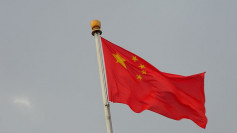Japan's exports fell for the first time in 10 months in September, highlighting the challenges faced by the country's economy amid a global slowdown. Data released by the Ministry of Finance on Thursday revealed a 1.7% decline in exports year-over-year, missing market expectations for a modest 0.5% increase. The drop, driven by weak demand in China and the United States, raises concerns about Japan's economic outlook and complicates the central bank's monetary policy trajectory.
Shipments to China, Japan's largest trading partner, slumped by 7.3%, reversing gains made in the previous month. Exports to the United States also saw a decline of 2.4%. This decline in overseas demand comes as Japan grapples with a strengthening yen, which further pressures export values. The yen's appreciation, partly influenced by the Bank of Japan's unexpected rate hike in July, has added another layer of difficulty for exporters.
Economist Kazuma Kishikawa of the Daiwa Institute of Research noted, "It's possible that exports will continue to struggle in the coming months in light of uncertainties, particularly in the Chinese economy." He pointed out that China's domestic stimulus measures have yet to produce the intended impact, with consumer demand remaining softer than anticipated.
September's export performance contrasts sharply with the 5.5% growth recorded in August. The latest figures show that exports of automobiles, one of Japan's key industries, were particularly hit, reflecting broader weaknesses in global demand. The data underscores the fragile state of Japan's recovery as it tries to regain momentum following the disruptions caused by the pandemic.
On the import side, Japan recorded a 2.1% rise in September, led by electronic goods such as calculators and semiconductor components. This figure, however, also missed market forecasts, which had anticipated a 3.2% increase. The combined effect of falling exports and rising imports led to a trade deficit of ¥294.3 billion ($1.97 billion) for the month, exceeding the projected deficit of ¥237.6 billion.
Yayoi Sakanaka, a senior economist at Mizuho Research & Technologies, described the export data as "a weak result," emphasizing that the slowdown could be a drag on Japan's overall economic performance in the third quarter. "Looking ahead, though the yen is slightly weaker again, I don't think it will be a tailwind for exporters given the stronger headwinds, such as China's strengthening of its own exports," Sakanaka remarked.
This decline in Japan's exports is part of a broader trend of weakening global growth. The World Trade Organization recently downgraded its forecast for global goods trade growth in 2025, citing rising geopolitical tensions and economic instability that could disrupt global supply chains. Major economies, including China, the U.S., and Europe, are showing signs of contraction or slow growth, compounding the challenges for Japan's export-driven economy.
The Bank of Japan (BOJ) is closely monitoring these global trends as it prepares for its next policy meeting on October 30-31. BOJ Deputy Governor Ryozo Himino emphasized that external factors, especially in the U.S. and China, are critical for the central bank's decision-making process. "Employment and consumption data in these countries are becoming increasingly important for the bank's decisions," Himino stated last week.
Despite the challenges, the BOJ is expected to maintain its current interest rate settings at the upcoming meeting, according to a survey by Bloomberg. The central bank has reiterated that while global economic conditions pose risks, it remains focused on domestic price stability and exchange rate levels.
The yen's recent movements remain a key variable for Japan's economic outlook. The currency averaged ¥144.27 against the dollar in September, marking a 1.5% appreciation from the previous year. Finance Minister Katsunobu Kato expressed concern over the yen's fluctuations, stating that while a weaker yen may boost export profits, it also raises import costs, impacting households and businesses alike. "We are closely watching both the positive and negative impacts of yen moves on Japanese businesses," Kato said.
The Ministry of Finance's data adds to the complexity of Japan's economic environment. While the country's economy showed some growth in the second quarter, largely driven by private consumption, economists caution that the momentum may be temporary given the headwinds from external markets. The BOJ has indicated that it will continue to assess these developments carefully, with Governor Kazuo Ueda emphasizing the importance of global economic conditions in determining future policy adjustments.






